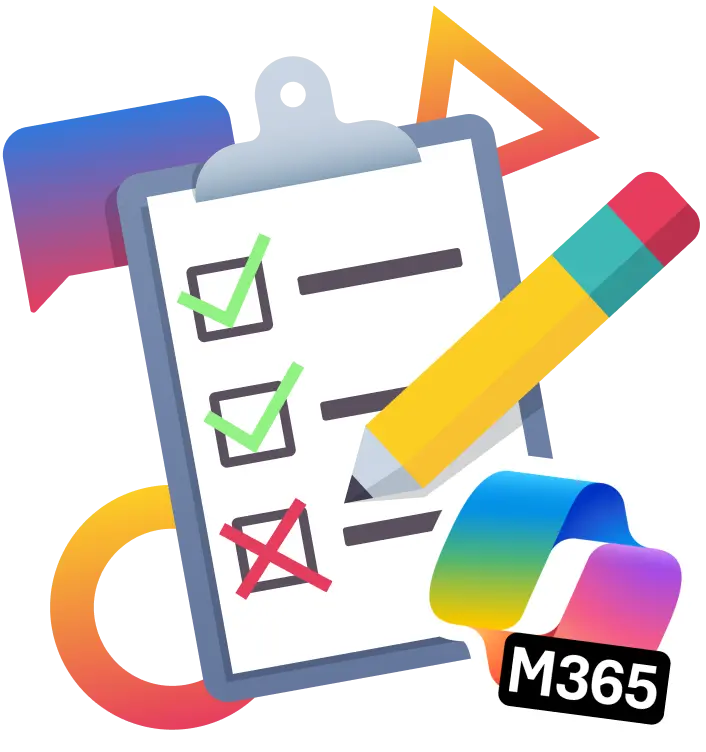How To Leverage Your Office 365 Subscription
Office 365 is so much more than Outlook, Word, Excel, and PowerPoint. It gives you access to a wealth of other tools to help your organization communicate, collaborate, and automate business process.
Who is this for?
Let me first start by saying that the target audience is any team that is getting started with Office 365, considering a migration to the Microsoft Cloud, or maybe you’ve been using Office 365 for some time but haven’t looked deeper at the wide range of capabilities. Most organizations are familiar with Office tools like Word, Excel, and PowerPoint, which draws them to Office 365. This subscription is a good deal if you're looking to pay a nominal cost per user per month to access those productivity tools. You don’t have the headaches of managing licenses and installation, and you get a cost structure that aligns and flexes with your business.
You should know there's a range of additional tools you can leverage in Office 365 that come along with the the core Office Suite. In this post we’ll focus primarily on things you can do with these tools for the standard license pricing, and for the sake of this conversation let’s assume you have the equivalent of Office 365 E1 licensing or Microsoft 365 Business Standard licensing.
For context, we’ve grouped these tools into two primary categories: Communication & Collaboration and Business Applications.
Communication & Collaboration

Microsoft Teams
Microsoft Teams facilitates communication with your team, your customers, and your vendors, using instant messaging, voice calls, or video conferencing using Microsoft Teams.
Microsoft Teams is most commonly used as a communication and collaboration tool where your team members can work together and communicate in a variety of ways. Use video conferencing, persisted, context-based chat, notify your team by tagging them, connect with anyone in your list of contacts, collaborate on files, fully integrated with your Outlook calendar and contacts.

Planner
Planner allows you to enable organizational and team level task management and scheduling.
Planner is an easy to use, customizable task board that can help your team organize project tasks. You get simple board-based lists of tasks that can be categorized, prioritized, and assigned. You even get some simple reporting that can be used to track and report status

SharePoint
SharePoint can be thought of as a backbone for much of what I’m talking about today. It’s a great repository for managing lists, libraries of documents, and can be used as a communication hub or even for collaboration with external resources.
SharePoint has been around forever. It’s taken a fair share of criticism over the years for not living up to all the promises. But now it’s in the cloud. You don’t need to install and manage a farm anymore, Microsoft is just doing that for you and by the way, you’re paying for it with your Office 365 subscription.
One of the great things about SharePoint today is Microsoft has really gotten it right when it comes to user experience and intuitive design. The Modern user interface has come a long way and is good enough that most users will not have an issue picking it up.
Additionally, for those who have been through the wringer of building corporate intranets and portals, the game has changed. Microsoft’s new communication hub strategy where sites can be coupled, decoupled, and moved around, makes managing content a much easier task in today’s dynamic and changing organizations.

OneDrive
OneDrive frees you from the tether to your office workstation or office network.
Pretty much everybody is working remotely in some capacity these days. Enabling your team with OneDrive provides them with the flexibility to work from anywhere. They can create, manage, and even share files they are working on from a designated and secured location in the Microsoft Cloud. You can eliminate the need for physical / network file storage. Each Office 365 user gets 1 Terabyte of storage space, which you’re already paying for!
Like many changes, a shift to OneDrive requires some discipline and usually, a push from IT leadership can be helpful.
Start promoting good habits. Get your users to keep their “working” files on OneDrive instead of their desktop/laptop and you can avoid costly hard drive crash/data loss events.

Stream
Stream lets you create and categorize video content for your organization.
Our society has never been more video-driven. Video is used in our daily lives for entertainment but when I think about where Stream is useful, it’s all about education and learning. How many of us consume YouTube content to learn how to fix something at home, fix a car, learn a new recipe… it’s endless.
What if your team had a habit of recording the way they perform a task, reset their password, or fill out the new HR form. All of this becomes a library of educational and informational video content that you can store and categorize in Stream.
When you need to orient the new hire, you can send them a list of videos to watch. When you need to train someone who is moving into your department, send them a link to a video.
Now take it a step further and start recording Teams content like video conferences, sales calls, and virtual team meetings. Any of your Teams meetings or calls can be recorded. If you wonder where the recorded videos go… Stream! Use this to give team members who are unable to attend the ability to catch up, or even to review the meeting for missed notes.

Forms
Microsoft Forms helps you improve your team, methods, and organization through feedback and assessment.
Use Forms to create surveys to solicit feedback from internal team members as well as your customers. Create a quiz to assess knowledge or how well a topic was communicated. Microsoft Forms provides the ability to share results with your team and even provides some built-in analytics. You can even use Microsoft Forms results as a dataset for Power BI and it becomes even more powerful.
Business Applications

PowerApps
Power Apps opens a whole new world of possibilities when it comes to creating functional and useful business software. Power Apps is a tool for creating modern contextual business applications. The big win with Power Apps is that you can now experiment with ideas or create apps to facilitate a need, where you didn’t before because it just cost too much or took too long to write an application from scratch.
There are limitations to the free version. However, if your needs are relatively simple like capturing data to start a process like a Time Off Request or capturing data for a sales quote using a mobile device, you can do amazing things with the free version.
Do you have a legacy Microsoft Access database application? This is the cure for that too.

Power Automate
Power Automate like PowerApps, is a no-code/low-code tool that enables automation of virtually any process or task in your business to free up valuable time to focus on your mission.
This may be one of the most valuable tools you can leverage with your subscription. There are huge opportunities to make business better and improve the day-to-day for your team.
Maybe your Accounts Payable team has a process for intake and approval of invoices. It’s very easy now, using Power Automate to create a process to monitor a mailbox and send the invoices for approval to someone based on the content of the invoice, where it came from, etc.
What happens when someone is hired in your company? What if you could trigger the entire process of creating a network account, requesting badge access, adding the new user to line-of-business apps, send them a welcome e-mail on their first day with a list of automated forms to complete and an orientation video… all when your HR manager receives a signed offer letter.

Power BI
Power BI lets you create compelling visual reports that can be accessed and shared in the cloud.
Most businesses today have some data floating around somewhere. It may be in Excel spreadsheets, MS Access databases… or maybe even data exported from another line-of-business or accounting system.
You can use the free version of Power BI with that data, share it securely with your team, and create compelling visual reports accessible from anywhere. Your entire team can securely access your business analytics without the requirement to VPN, open a file share, and then compete with other users who have the same file open.
Conclusion
Those are my favorite value add tools that come with your Office 365 subscription. There are several others we can discuss, but we’ll save that for another time. These tools are changing how teams work and shifting the approach to problem-solving with technology and Microsoft is only continuing to add new powerful capabilities to these tools every week.

SELF ASSESSMENT
Is your business getting full value from your M365 subscription?
Billions of dollars are wasted each year on underused subscriptions. Take 3 minutes to find out where your tools are driving results, and where they’re holding you back.
Find Out Now

Is Team Communication Holding You Back?
Find Out in Just 2 Minutes.
Take our quick scorecard to uncover communication gaps and hidden barriers within your team.






.jpg)

.jpg)





